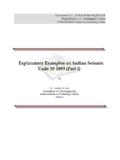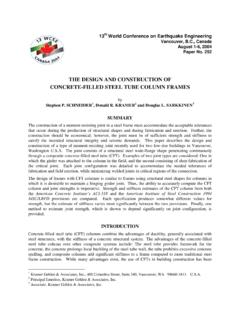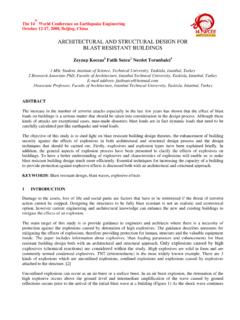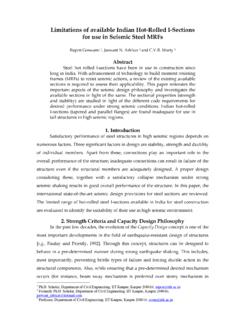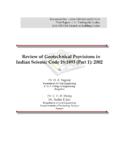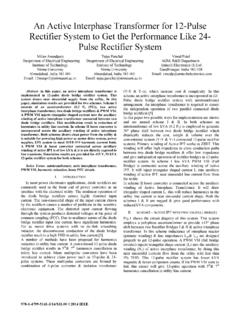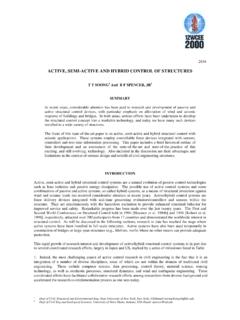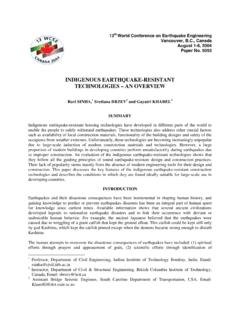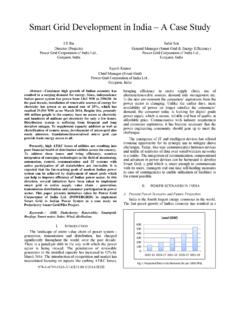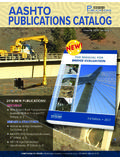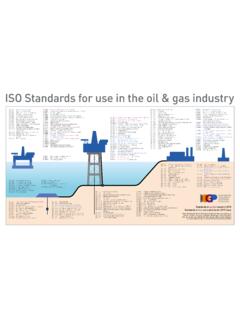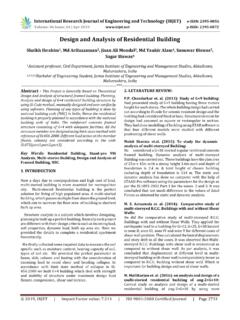Transcription of Some Concepts in Earthquake Behaviour of Buildings
1 SSoommee CCoonncceeppttss iinn EEaarrtthhqquuaakkee BBeehhaavviioouurr ooff BBuuiillddiinnggss MMuurrttyy RRuuppeenn GGoosswwaammii VViijjaayyaannaarraayyaannaann VViippuull MMeehhttaa GGuujjaarraatt SSttaattee DDiissaasstteerr MMaannaaggeemmeenntt AAuutthhoorriittyy GGoovveerrnnmmeenntt ooff GGuujjaarraatt SSoommee CCoonncceeppttss iinn EEaarrtthhqquuaakkee BBeehhaavviioouurr ooff BBuuiillddiinnggss MMuurrttyy RRuuppeenn GGoosswwaammii VViijjaayyaannaarraayyaannaann VViippuull MMeehhttaa GGuujjaarraatt SSttaattee DDiissaasstteerr MMaannaaggeemmeenntt AAuutthhoorriittyy GGoovveerrnnmmeenntt ooff GGuujjaarraatt StrengthStiffness Deformability H Lateral Deformation design Lateral Force HInelastic Energyii iii Preface This book explains Concepts in Behaviour of Buildings during earthquakes.
2 The book dwells on basic Concepts in Earthquake resistant design of Buildings , first describes these at a conceptual level and then articulates further with numerical examples. It is an attempt to respond to some of the frequently asked questions by Architects and Structural Engineers regarding Behaviour of Reinforced Concrete (RC) and Steel Buildings under the action of lateral loads, especially during earthquakes. Since most Buildings built in India are made of RC, the dominant set of examples used is of RC Buildings .
3 But, with no loss of generality, the broad Concepts discussed in this document are valid for both RC and Steel Buildings . Also, the discussion is limited to normal Buildings without any special devices, like base isolation and other energy absorbing or dissipating devices. Also, specialised systems (like post-tensioning slab systems and nuclear power plants) are not in focus. This book employs exaggerated deformation shapes to emphasise deformations, and thereby, to develop the most needed intuition of structural Behaviour of Buildings during earthquakes and its consequences on Earthquake -resistant design .
4 The book contains animations related to Behaviour of the various Buildings models used in this work. Those readers seeing the electronic copy of this book should make special note of those pages titled Animation Set .., to capture the hyperlinks and reach the said animations. The target audience of the book is practicing seismic structural engineers and architects, in addition to students and teachers of engineering and architecture colleges striving to understand seismic Behaviour , analysis and design of Buildings . iv v Acknowledgements The authors are grateful to the Gujarat State Disaster Management Authority (GSDMA), Government of Gujarat, Gandhinagar (Gujarat, India), for readily agreeing to support the preparation of this book; the generous financial grant provided by GSDMA towards this effort is gratefully acknowledged.
5 Ms. Alpa R. Sheth, Managing Director, Vakil Mehta Sheth Consulting Engineers Private Limited, Mumbai, and seismic Advisor, GSDMA, Gandhinagar, Gujarat, has provided unstinted support to the project. Her technical inputs have been invaluable at all stages of the project - the proposal review, intermediate feedback during development and technical review at the end. The authors are indebted to her for this proactive role in the development of the book, and thank her sincerely for the same. The authors sincerely thank Mr.
6 Birju Patel, Deputy Director, GSDMA, Gandhinagar, for timely action and administrative support from GSDMA side. The authors extend their appreciation to Dr. R. Bannerji, IAS, Chief Executive Officer, GSDMA, Dr. V. Thiruppugazh, IAS, Additional Chief Executive Officer, GSDMA and Mr. S. I. Patel, Additional Chief Executive Officer, GSDMA for their invaluable inputs and guidance during the course of preparing and finalizing this book. Mr. Arvind Jaiswal, Chief Consulting Engineer, EON Designers and Architects Limited, Secunderabad, read in detail the manuscript of this book and offered critical technical comments; the authors offer him their most sincere gratitude for this special contribution towards improving the usefulness of this book.
7 CSI India, New Delhi, provided the nonlinear structural analysis tools, , SAP2000, ETABS and PERFORM 3D, to undertake numerical work for the preparation of this book; this contribution is sincerely acknowledged. Professors Devdas Menon and A. Meher Prasad at IIT Madras provided resources during the early days of the work and offered continued encouragement during the entire course of this work; the authors are indebted to them for this affection and support. (Civil Engineering) students at IIT Madras, Mr.
8 Deepan Shanmugasundaram, Mr. Arun Mathews and Mr. K. Rajgopal, prepared the input files for many building analyses as part of their research assistantship; their contribution is sincerely acknowledged. The authors acknowledge with thanks the support offered by various sections of IIT Madras in administering this book writing project. In particular, the authors gratefully acknowledge support offered by Mrs. S. Kavita, Project Assistant, Department of Civil Engineering, and of Mrs.
9 C. Sankari and Mr. Anand Raj of the Structural Engineering Laboratory of the Institute. The authors remain indebted to their parents and family members for the unconditional support and understanding throughout the development of the This book is dedicated to all the people of India, who lost their lives in RC building collapses during past earthquakes in the vi vii Contents page Preface iii Acknowledgments v Contents vii Symbols x 1 Earthquake -Resistant Buildings Basics of Earthquake -Resistant design and Construction 1 Basic Aspects of seismic design 2 The Four Virtues of Earthquake Resistant Buildings 5 Characteristics of
10 Buildings 5 (a) seismic Structural Configuration 5 (b) Structural Stiffness, Strength and Ductility 8 What are the Four Virtues? 9 (a) Who Controls the Four Virtues? 9 (b) How to Achieve the Four Virtues? 10 Earthquake Demand versus Earthquake Capacity 10 Force- based design to displacement - based design 13 2 Earthquake Demand on Buildings seismic design Force 15 Dynamic Characteristics of Buildings 18 Natural Period 18 (a) Fundamental Natural Period of building 19 (b) Factors influencing Natural Period 20 (1) Effect of Stiffness 21 (2) Effect of Mass 22 (3) Effect of building Height 23 (4) Effect of Column Orientation 24 (5)
